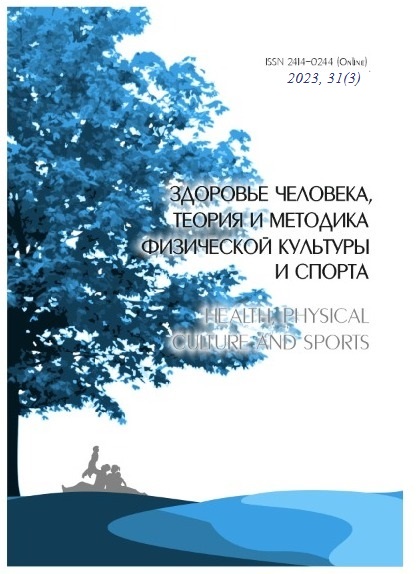AWARENESS OF YOUNG PEOPLE ABOUT THE RISKS OF HEALTH DISORDERS IN CONSUMERS OF FOOD PROCESSED WITH THE FLAVORING "LIQUID SMOKE" AT HOME
Abstract
Аbstract."Liquid smoke" is a flavoring agent in the form of a liquid or dry concentrate designed to simulate the effect of natural smoking (taste, color, aroma and preservation) by treating the surface of the product or directly adding flavor to the product during cooking. The purpose of the study is to study the effect of the "liquid smoke" flavor on human health, as well as to clarify the awareness of medical university students about the risks of health disorders when processing food products using the "liquid smoke" flavor at home. Materials and methods. The following methods are used in the work: analytical, comparative and evaluative, as well as sociological survey by anonymous voluntary questionnaire. 82 people took part in the survey – students of the medical university aged from 17 to 22 years. Among them (74% are female and 26% are male). The survey was conducted using the Google platform. Results. The study of students' awareness of the potential danger of "liquid smoke" for the human body showed that 35.3% of the respondents could not answer this question, 23.5% of people are convinced of the high degree of danger of "liquid smoke", 29.4% consider it to be dangerous to a minor extent and 11.8% are confident in its safety. At the same time, 88.2% of respondents use smoked products, and 11.8% refuse to consume smoked products. 92.3% of students more often use natural smoking in the preparation of dishes and only 7.7% prefer processing with liquid smoke. Conclusion. A low level of awareness among students about the risks of health disorders among consumers of food treated with liquid smoke at home was revealed
Downloads
References
2. Бестужев, Б. Секреты домашнего копчения: горячее и холодное / Б. Бестужев. – Белгород: Изд-во «Клуб семейного досуга», 2016. – 320 с.
3. Веретов, Л. А. Копчение мясной продукции: польза или вред / Л. А. Веретов // Мясная индустрия. – 2018. – № 9. – С. 36-40.
4.Крыгин, В. А. Влияние способа копчения на товарные и санитарные показатели копчёного изделия из мяса птицы / В. А. Крыгин / Изв. Оренбург. гос. аграр. ун-та. – 2021. – № 3 (89). – С. 236239.
5. Кучерук, Д. И. Жидкие дымы и оборудование для бездымного копчения / Д. И. Кучерук // Пищевая промышленность. – 2006. – № 9. – С. 39.
6. Машкина, Е. И. Жидкий дым в мясных изделиях / Е.И. Машкина // Перспективы внедрения инновационных технологий в АПК : сб. ст. II Российской (Национальной) науч.-практ. конф., Барнаул, 20 дек. 2019 г. – Барнаул, 2019. – С. 58-60.
7.Надвоцкая, В. В. Исследование массовой концентрации бенз(а)пирена в рыбных консервах методом высокоэффективной жидкостной хроматографии / В. В. Надвоцкая, Е. А. Емельянов // Проблемы техносферной безопасности : сб. ст. V Междунар. науч.-практ. конф. / под ред. М. Н. Вишняк. – Барнаул, 2022. – С. 57-61.
8. Некоторые пищевые добавки и их технологические эффекты // Рыбпром. – 2009. – № 3. – С. 4244.
9. Родина, Т. Г. Коптильные препараты и ароматизаторы / Т. Г. Родина // Вестник Российской экономической академии им. Г.В. Плеханова. – 2007. – № 2. – С. 105-112.
10.Слапогузова, З. В. Коптильные ароматизаторы / З. В. Слапогузова, О. В. Ефремов // Рыбпром: технологии и оборудование для переработки водных биоресурсов. – 2009. – № 3. – С. 8-12.
11.Чуркин, К. А. Квалиметрическая оценка показателей качества копченостей, полученных традиционным методом копчения и по технологии «жидкий дым» / К. А. Чуркин, С. С. Бордюгова // Интергация науки и практики как условие продовольственной безопасности : сб. материалов междунар. науч.-практ. конф., Луганск, 12-16 октября 2020 г. – Луганск, 2020. – С. 157-160
12.An in vitro-based hazard assessment of liquid smoke food flavourings / E. Selin [et al.] // Arch. Toxicol. – 2022. – Vol. 96, № 2. – P. 601-611. – doi:10.1007/s00204-021-03190-1.
Copyright (c) 2023 Health, physical culture and sports

This work is licensed under a Creative Commons Attribution-NonCommercial 4.0 International License.
An author should not normally publish manuscripts describing essentially the same research in multiple journals or publication venues. Such redundant publication is generally considered to constitute unethical publishing behavior, and if discovered may result in a manuscript under consideration being rejected, or a published article being retracted.
Authors of manuscripts reporting on original research should present an accurate account of the work performed, accompanied by an objective discussion of its significance. Underlying data should be represented accurately in the manuscript. The manuscript should contain sufficient detail and references to permit others to replicate the work. The fabrication of results and the making of fraudulent or knowingly inaccurate statements constitute unethical behavior and may be cause for rejection or retraction of a manuscript or published article.





